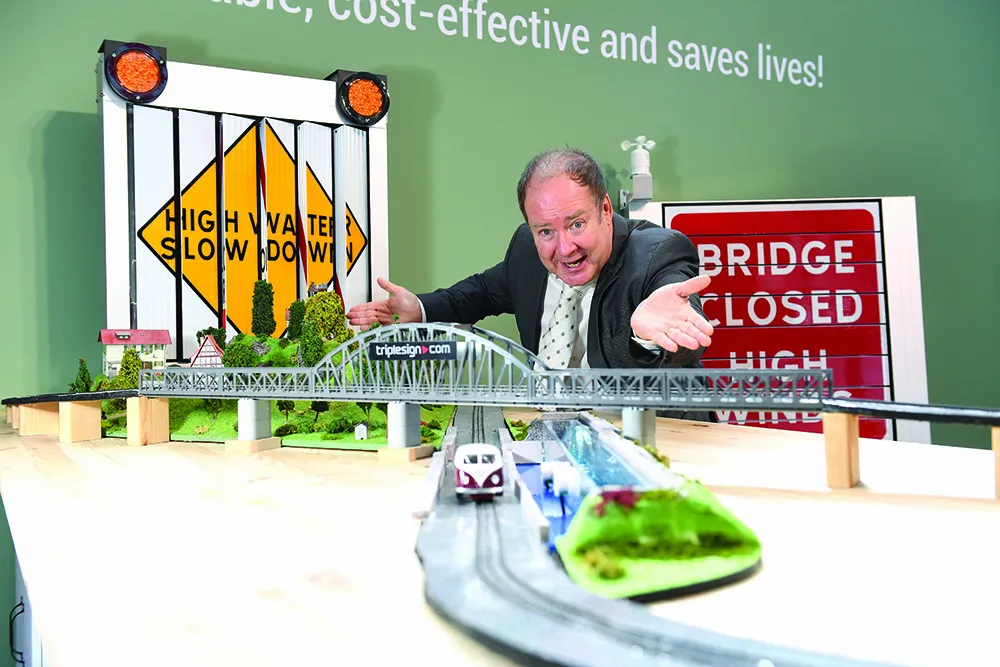An innovative cycle safety device designed to alert truck drivers to the presence of a cyclist is about to be launched. The Cycle Alert system not only alerts drivers to a potential risk in areas frequented by cyclists, it also facilitates a direct warning from a cyclist straight to the vehicle driver. The system has three elements: a unit that is fitted to the bicycle, or worn by a cyclist on their person or helmet, sensors that are fitted to the HGV and a cab-mounted device to alert the driver. The three
May 2, 2013
Read time: 2 mins
An innovative cycle safety device designed to alert truck drivers to the presence of a cyclist is about to be launched.
The Cycle Alert system not only alerts drivers to a potential risk in areas frequented by cyclists, it also facilitates a direct warning from a cyclist straight to the vehicle driver.
The system has three elements: a unit that is fitted to the bicycle, or worn by a cyclist on their person or helmet, sensors that are fitted to the HGV and a cab-mounted device to alert the driver. The three units work in sync to form a communication network between all parties, alerting the driver - with maximum advance notice - of a cyclist in proximity.
The in-cab receiver is designed to create minimal distraction for the driver, with a simple and audible cyclist warning and a flashing light that indicates where the cyclist or cyclists are positioned near or around the vehicle. This allows the driver to react instantly and actively avoid any potential collisions.
Unlike other sensor and video systems in circulation, Cycle Alert is cyclist specific, tracking cyclists up to two metres in proximity. The system also evades the white noise issue of existing systems indicating the presence of any object in the vicinity.
Cycle Alert’s co-founder and the system’s innovator, Peter Le Masurier explains: “There are currently no systems on the market that can tell an HGV driver whether a cyclist is close to their vehicle. This is where Cycle Alert comes in. Everybody needs to take responsibility for their own safety on the road. Cycle Alert empowers cyclists to make themselves more obvious to HGV drivers.”
The system has already received approval from two of the leading names in the haulage industry: Eddie Stobart and Keltbray are early supporters of the scheme, and it is currently being independently tested by the Transport Research Laboratory (491 TRL). Cycle Alert is also currently fitted to an Eddie Stobart lorry and being demonstrated at the Met Police Task Force’s Cycle Safety Awareness Initiative at key London hotspots.
The Cycle Alert system not only alerts drivers to a potential risk in areas frequented by cyclists, it also facilitates a direct warning from a cyclist straight to the vehicle driver.
The system has three elements: a unit that is fitted to the bicycle, or worn by a cyclist on their person or helmet, sensors that are fitted to the HGV and a cab-mounted device to alert the driver. The three units work in sync to form a communication network between all parties, alerting the driver - with maximum advance notice - of a cyclist in proximity.
The in-cab receiver is designed to create minimal distraction for the driver, with a simple and audible cyclist warning and a flashing light that indicates where the cyclist or cyclists are positioned near or around the vehicle. This allows the driver to react instantly and actively avoid any potential collisions.
Unlike other sensor and video systems in circulation, Cycle Alert is cyclist specific, tracking cyclists up to two metres in proximity. The system also evades the white noise issue of existing systems indicating the presence of any object in the vicinity.
Cycle Alert’s co-founder and the system’s innovator, Peter Le Masurier explains: “There are currently no systems on the market that can tell an HGV driver whether a cyclist is close to their vehicle. This is where Cycle Alert comes in. Everybody needs to take responsibility for their own safety on the road. Cycle Alert empowers cyclists to make themselves more obvious to HGV drivers.”
The system has already received approval from two of the leading names in the haulage industry: Eddie Stobart and Keltbray are early supporters of the scheme, and it is currently being independently tested by the Transport Research Laboratory (








